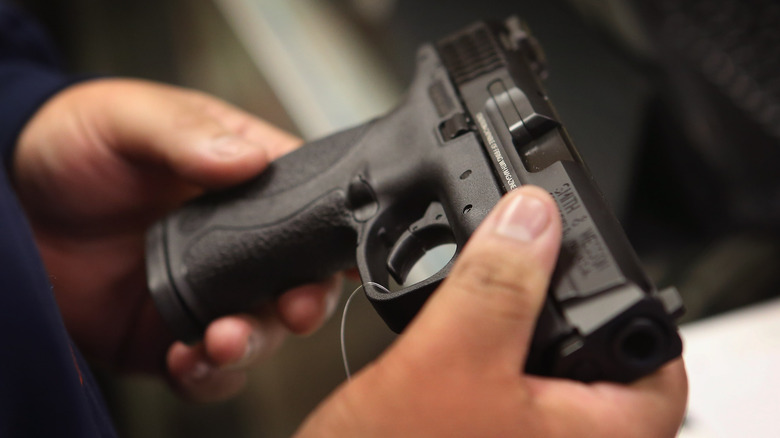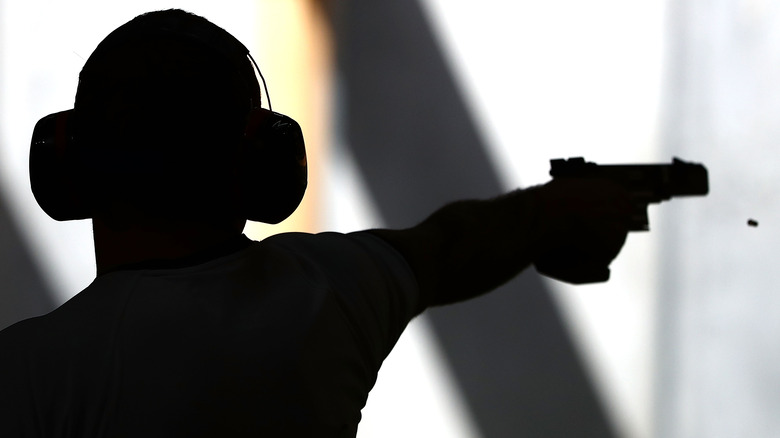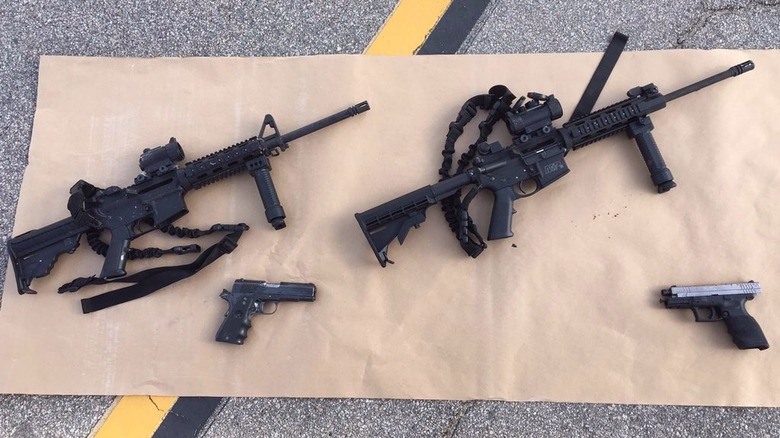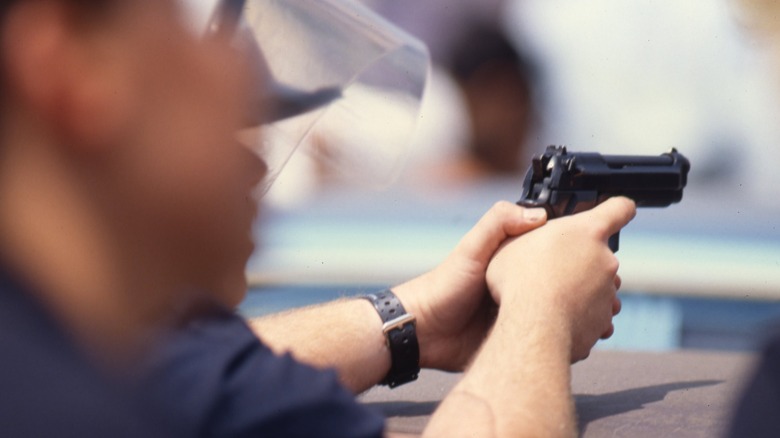Expert Reveals The Hidden Dangers Of Prop Guns
A tragic and fatal accident that occurred on set of Alec Baldwin's upcoming film "Rust" has led to an influx of questions about the safety of prop guns. According to CNN, the film's director of photography, Halyna Hutchins, was killed and director Joel Souza was injured as the result of an accident relating to a prop gun Baldwin discharged. Souza was hospitalized for his injuries but has since been released (via Deadline).
Baldwin issued a statement about the incident. "There are no words to convey my shock and sadness regarding the tragic accident that took the life of Halyna Hutchins, a wife, mother and deeply admired colleague of ours," he wrote on Twitter. In a second tweet he said that he had reached out to Hutchin's husband to offer support to the family. The actor added that he is cooperating with a police investigation into how the accident occurred.
Although the horrible accident is fresh on the public's mind, this sort of tragedy is not a common occurrence. Kevin Williams, prop department supervisor at the UCLA School of Theater, Film and Television told NPR that it was an "extremely rare circumstance" and "one of these freak accidents." He added that there are many precautions taken to protect both cast and crew when prop weapons are involved with filming.
The last recorded similar fatal incident took place on set of "The Crow" in 1993. Still, people are wondering how and why prop weapons would be dangerous in the first place.
Even if they shoot blanks, prop guns carry a level of 'inherent risk'
Safety bulletins written by the Industry-Wide Labor-Management Safety Committee set Hollywood's standards for prop safety, according to NPR. Although the guidelines are not written in stone, one of the recommendations is not to store live ammunition on set. Even though they aren't loaded with actual bullets, prop guns that fire blanks can still be deadly.
"Prop weapons do have a dangerous factor to them, even though they're a lot safer than using a real firearm," prop master Joseph Fisher — who has weapon experience from the military and the NYPD — explained in an interview with CNN. Blank-firing weapons carry an "inherent risk," and weapons can still be loaded with between 25-50% of the gunpowder that would be used in an actual cartridge.
"Anytime you're dealing with a gunpowder load, which is what's in a prop weapon that fires blanks, you're going to have gas," he explained. "You're going to have heat. You're going to have air coming out of it. Even though there's no actual physical projectile mounted on the front of that weapon, on the cartridge, there is [sic] projectiles that do come out. The powder. The gas. And those can cause physical injury within 25 to 50 feet, depending on the load."
Guidelines compiled by NJ.com noted that prop guns can also pose fire risk and are "extremely dangerous." This is why there are so many recommendations for safety on set.
There are many precautions taken when using prop weapons
Since prop weapons are still dangerous, Hollywood takes precautions to limit the risk associated with using them. For instance, Joseph Fisher told CNN that actors never directly point the gun at another actor on set. Instead, they aim the weapon at an angle, and directors rely on camera angles to imply a more immediate sense of danger.
"There are a lot of working pieces when it comes to firing guns on set," Karl Weschta, vice president of weapons for Independent Studio Services in Los Angeles, told NPR. Director and production designer Ben Rock echoed that sentiment in a series of tweets. He added that teams can lose upwards of 30 minutes of film time when a weapon is involved. That time instead goes to necessary safety briefings. Time is also spent on other safety precautions, such as passing out ear plugs to protect the crew and cast's hearing, or setting up plywood and plexiglass safety barriers.
Despite all this, accidents can happen. Kevin Williams told NPR that various pressures on set can at times lead to relaxed safety precautions. "When you are on set, dealing with creatives, and they are asking for certain circumstances, sometimes these demands are hard to say no to," he explained. "A lot of our industry is built on relationships, so sometimes people have to make questionable decisions."
Some directors are calling to end the use of blank-firing weapons
In his thread of tweets, Ben Rock hypothesized that blank-firing weapons are used for two main reasons: "greater acting realism and a visible muzzle flash." He argued that there were other ways to achieve both. For instance, a loud noise made safely on set could help simulate the sound of a firing weapon. He added that the flare of a firing weapon happens so quickly that it can be missed by a camera anyway. Rock recommended switching over to Airsoft guns, which are replicas that shoot pellets.
He wasn't alone in his opinions. Megan Griffiths, who identifies on Twitter as a film and television director, referred to muzzle flashes as the "easiest and cheapest visual effect." Actor and director Aisha Tyler also seemingly called for the use of Airsoft weapons instead of blank-firing guns on set (via Twitter).
Insider noted that a multitude of other directors and filmmakers have questioned the need for more dangerous weaponry on set. For instance, Craig Zobel, director of "Mare of Easttown," tweeted that "there's no reason to have guns loaded with blanks or anything on set anymore." He added that "it's an unnecessary risk."



